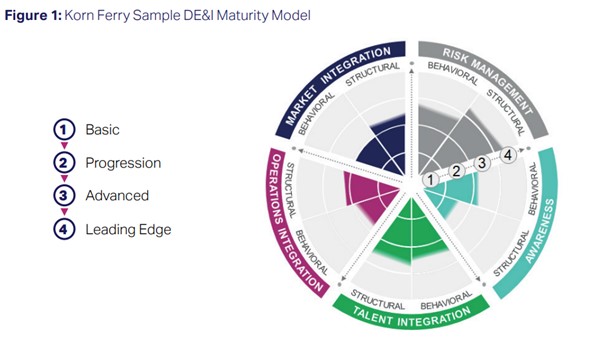There is a growing body of evidence that organizations with a mature diversity and inclusion (D&I) culture and approach can enjoy greater business success.
In recent years business organizations have needed to take onboard a whole raft of new ideas in line with societal expectations and regulations. Environment, equality, safety, social accountability and wider sustainability issues are just some. While all these are important and even essential, they do not inherently drive business success. Gaining benefits requires company commitment and ability to integrate the topic approach into core business strategies and processes. Diversity and inclusion, which is now rising on corporate agendas, is no exception. For companies dependent upon fostering creativity, innovation and making good business decisions, diversity and inclusion is proven to be an asset.
Most companies have yet to derive business benefits from their efforts. With evidence of advantages mounting, organizations are working to take tangible steps to integrate diversity and inclusion into company strategies, operations and cultures. In April 2022, the World Business Council for Sustainable Development – a body of 200 of the leading and most successful businesses globally – produced a report titled Diversity, Equity & Inclusion in collaboration with global organizational consulting firm Korn Ferry. The report highlights that diversity, equity & inclusion (DE&I) is both beneficial for employees and business. Moreover, as well as being central to corporate efforts tackling inequality, inclusive and equitable talent and business practices, it is also a source of competitive advantage.
According to the report, companies that embrace DE&I are:
- 70% more likely to capture new markets
- 75% more likely to see ideas become productized
- 19% higher innovation revenue
- Make better decisions 87% of the time
- Better at solving complex challenges (1)
These findings are powerful incentives for any business, and they are not isolated as other research shows similar benefits. In her book Which two heads are better than one? Juliet Bourke says that organizations with inclusive cultures are twice as likely to meet or exceed financial targets, three times as likely to be high-performing and eight times more likely to achieve better business outcomes. Another report by consultants McKinsey Diversity-wins-how-inclusion-matters in 2020 comes up with similar conclusions.
The report is the latest in a series that began in 2015 and covers findings emerge from a data set encompassing 15 countries and more than 1,000 large companies. Embracing DE&I would therefore seem to be a highly beneficial strategy for any organization from a business point of view. In DNV’s ViewPoint survey findings showed that most companies are very early in their diversity and inclusion journey, far from deriving business benefits and need to identify steps to improve. WBCSD and Korn Ferry highlight, “Every organization has a unique DE&I journey, shaped by business, priorities, commitment, resources, industry dynamics and more.”
The report breaks down the route to success into five areas as shown in the following diagram with four steps along the road to maturity. The authors said that most organizations self-diagnose themselves as “progressing” (level 2) and recognize their relatively early stage of DE&I maturity. They also said that most are currently focusing on the dimensions of DE&I awareness and talent integration while operations integration and market integration dimensions are perceived to be less developed at present. Looking ahead, they foresee data-driven DE&I efforts allowing measurement and monitoring of DE&I data and say that in order to achieve maturity, there must be a transformational approach ensuring that responsibility and ownership of the DE&I culture within organization is shared at all levels from top to bottom.
There is also a good argument to be made for adopting a systemic approach based on international diversity and inclusion standards such as ISO 30415. Companies adopting such an approach for other topics, such as environment, equality, safety, social accountability and wider sustainability issues do report improved risk management and business benefits. In a fast-changing world, solving complex problems is essential, and so is innovation. DE&I may be one way to unlock employee creativity and bring about desired business growth.

(1) https://hbr.org/2017/03/teams-solve-problems-faster-when-theyre-more-cognitively-diverse
